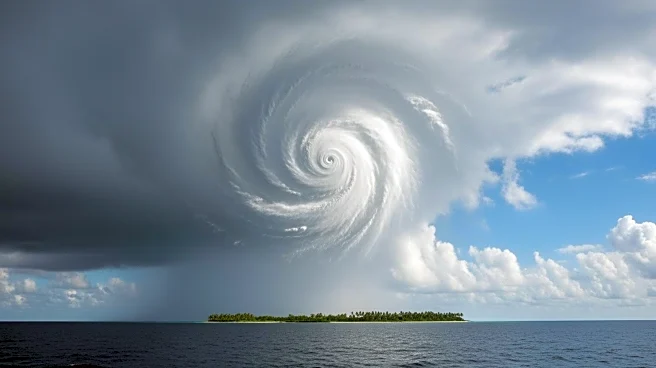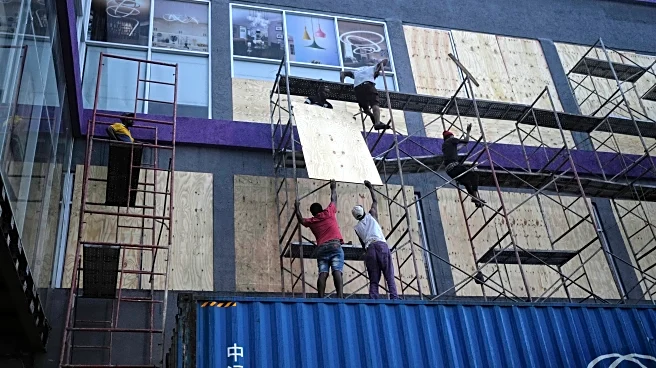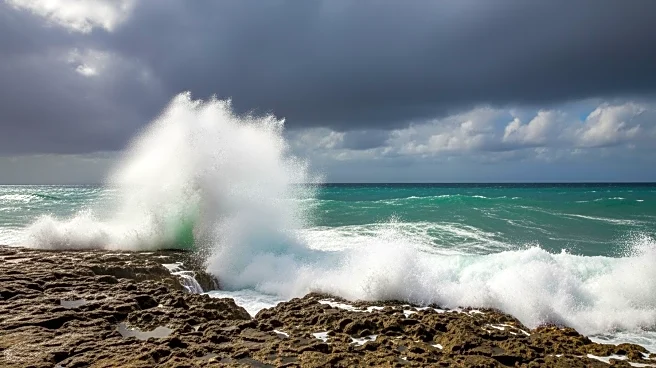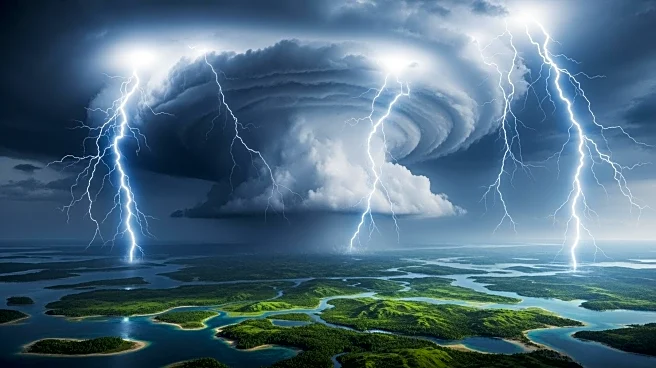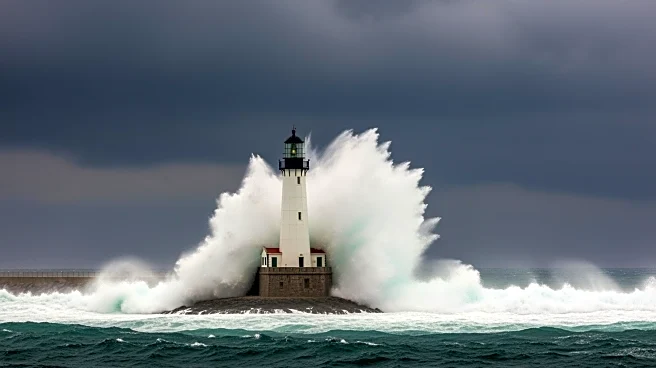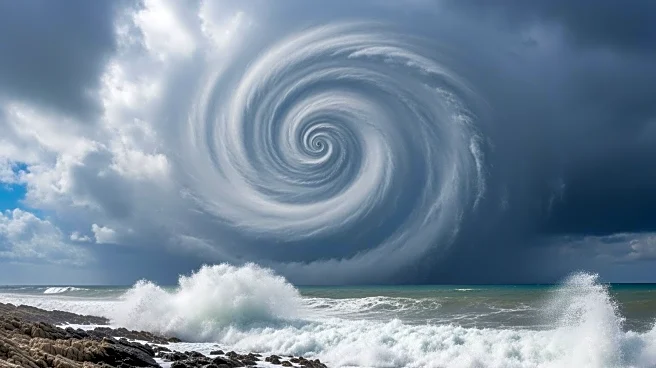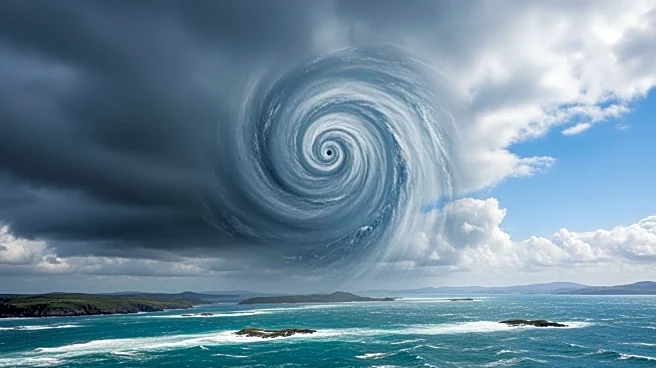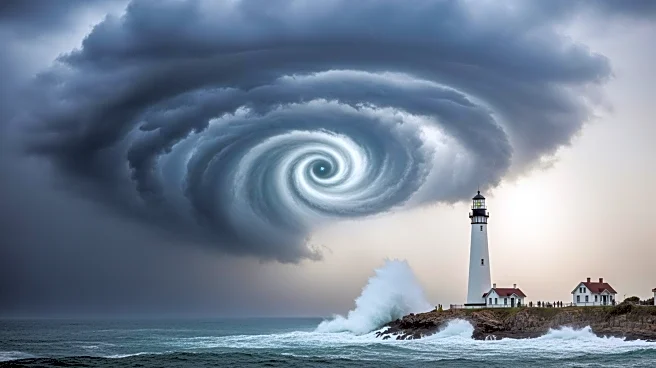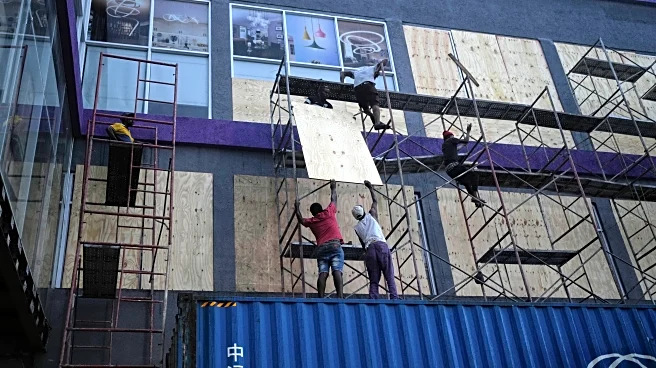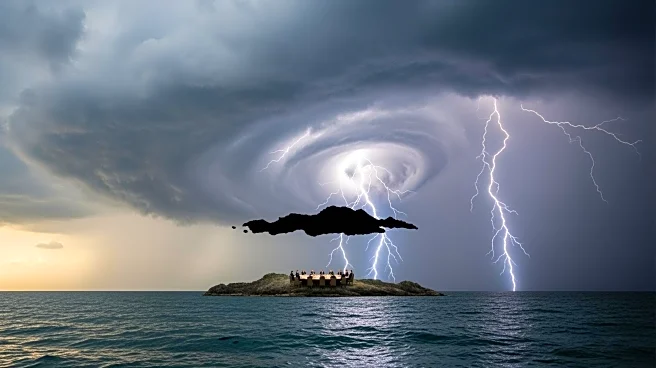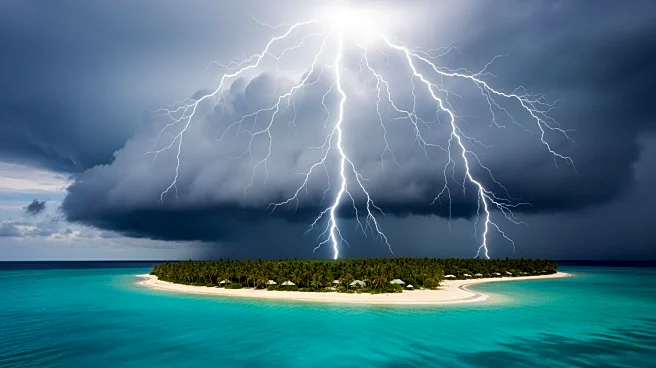What's Happening?
Hurricane Melissa has rapidly intensified into a Category 5 storm, posing a significant threat to Jamaica. The storm, which escalated from a tropical storm to a Category 4 hurricane in just 18 hours, now
boasts winds of 160 mph. It is currently located 135 miles southwest of Kingston, Jamaica, moving west at 3 mph. The U.S. National Hurricane Center has issued warnings of catastrophic flash flooding, life-threatening landslides, and extremely strong winds. Residents in Jamaica have been advised to seek shelter as dangerous conditions are expected to persist through the next day. The storm's intensity forced a NOAA Hurricane Hunter aircraft to abort its mission due to extreme turbulence.
Why It's Important?
The intensification of Hurricane Melissa into a Category 5 storm is significant due to its potential to cause widespread devastation in Jamaica and surrounding areas. The storm's strength, fueled by unusually warm Caribbean waters, could lead to severe infrastructure damage, displacement of residents, and economic disruption. The hurricane's impact on Jamaica's critical infrastructure, including airports and power plants, could have long-term consequences for the island's recovery and economic stability. Additionally, the storm's trajectory towards Cuba and the Bahamas raises concerns for further regional impacts.
What's Next?
As Hurricane Melissa approaches Jamaica, emergency services and government agencies are likely to focus on evacuation and disaster response efforts. The storm's path suggests it will continue towards Cuba and the Bahamas, prompting further preparations in these regions. Monitoring of the storm's development and potential eyewall replacement cycles will be crucial in predicting its future intensity and impact. The international community may also mobilize to provide aid and support to affected areas in the aftermath of the hurricane.
